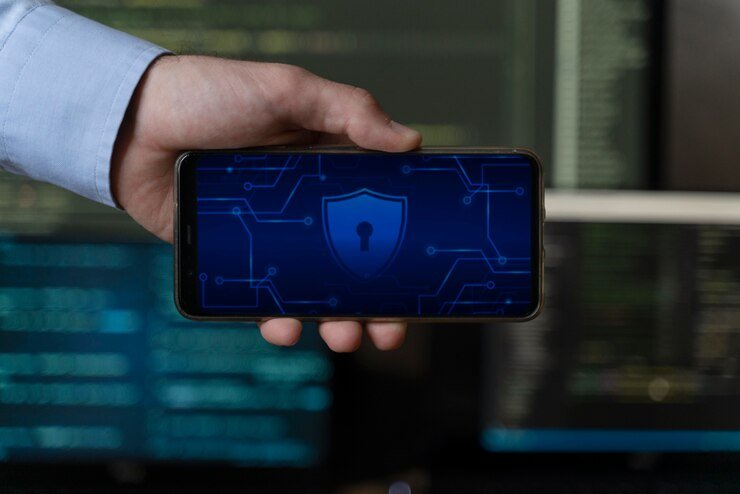Key Takeaways:
- Comprehensive insights into the different types of access control mechanisms.
- Understanding the importance of access control in cybersecurity frameworks.
- Real-world applications and best practices for implementing effective access control.
Table of Contents:
- What Is Access Control?
- Types of Access Control
- Why Access Control Matters
- Best Practices in Access Control
- Future Trends in Access Control
What Is Access Control?
Access control plays a crucial role in cybersecurity by managing who or what can access or utilize resources within a computing setting. It is crucial to safeguard data from unauthorized access and maintain the security of sensitive information. As cyber threats evolve, robust access control mechanisms are more important than ever. Efficient access control practices can prevent unauthorized entities from accessing confidential information, which is crucial for an organization’s security and compliance.
Understanding the nuances of access control helps organizations maintain secure environments, safeguard data, and comply with regulatory requirements. This concept applies to physical spaces and to digital assets, making it a versatile tool in any cybersecurity framework. By implementing effective access control mechanisms, organizations can minimize the chance of data breaches, safeguard their intellectual property, and uphold the confidence of their stakeholders.
Types of Access Control
Several types of access control mechanisms are used today, each serving different purposes and offering unique advantages. Understanding these types can help organizations select the most suitable method for their needs:
- Discretionary Access Control (DAC): The resource owner can decide who can access it. Flexibility is crucial, although handling sensitive data can be less secure. DAC systems are typically easy to configure and manage but can leave room for errors due to the discretionary nature of permissions.
- Mandatory Access Control (MAC): Access rights are assigned based on regulations from a central authority. MAC is highly secure but can be less flexible and more challenging to manage. It is often used in military and governmental environments where security is paramount and strict access controls are necessary to protect classified information.
- Role-Based Access Control (RBAC): Access is determined by the user’s role within an organization. It’s highly scalable and simplifies the management of user privileges. RBAC allows for efficient user management, especially in large organizations, by grouping permissions based on roles, which can then be assigned to individuals.
- Attribute-Based Access Control (ABAC): Access rights are granted based on attributes, such as time of day or location. It offers greater granularity and contextual access management. ABAC systems use policies to evaluate multiple attributes for making access decisions, providing a more dynamic and adaptable approach to access control.
Why Access Control Matters
The importance of access control cannot be overstated. It helps prevent data breaches, protects against internal threats, and ensures compliance with regulatory standards. Organizations are at a higher risk of unauthorized access without a robust access control system, leading to potential data leaks and financial loss. Implementing strong access control measures enhances security and helps organizations meet industry requirements and avoid costly fines and reputational damage.
Access control systems also enable organizations to monitor and track user activity, providing valuable insights into potential security vulnerabilities and ensuring accountability. Advanced access control technologies, such as biometric and multi-factor authentication, add additional layers of security, making it more difficult for unauthorized individuals to gain access. Access control helps streamline operations and prevent accidental data mishandling by clearly defining user roles and permissions. In a security incident, robust access control systems can facilitate a quicker response and investigation, minimizing the impact on the organization. Ultimately, investing in comprehensive access control measures is a proactive step towards safeguarding sensitive information and maintaining the trust of customers and stakeholders.
Best Practices in Access Control
Implementing effective access control involves several best practices. These practices ensure that the access control measures in place are both efficient and capable of addressing the evolving cybersecurity landscape:
- Regular audits: Conduct routine audits to ensure access controls are up-to-date and functioning correctly. Frequent evaluations can help detect and resolve any possible weaknesses or misconfigurations.
- with the least amount of access required to carry out their duties. This decreases the likelihood of unauthorized entry and limits the potential for attacks.
- Robust authentication methods: Utilize multi-factor authentication (MFA) to add an extra layer of security. MFA greatly increases the level of difficulty for unauthorized users to access, even if they manage to get hold of login information.
- Segmentation: Segment networks and data to limit exposure during a breach. By isolating sensitive information, organizations can contain and mitigate the impact of a security incident.
- Training and awareness: Educate employees on the importance of access control and how to use it effectively. Building a security-conscious culture helps ensure that access control policies are followed and respected.
Future Trends in Access Control
Looking ahead, the future of access control is evolving with technological advancements. Innovations such as artificial intelligence (AI) and biometric authentication are setting new standards in security. AI can enhance access control systems by analyzing user behavior and identifying anomalies. At the same time, biometric authentication, such as fingerprint or facial recognition, provides a high level of security that is difficult to replicate or bypass.
These emerging trends promise to make access control more sophisticated and complex to breach. Integrating AI and biometrics into access control systems will likely become more prevalent as organizations seek to adopt cutting-edge technologies to bolster their security measures.
Additionally, mobile credentials are gaining traction, allowing users to access secure areas via their smartphones, thus reducing reliance on physical keys or cards. Cloud-based access control systems are also becoming more popular, offering scalable and flexible solutions that can be managed remotely and updated in real-time. The Internet of Things (IoT) plays a significant role by connecting various security devices and enabling seamless communication for a more integrated security approach. As cyber threats evolve, advanced encryption and cybersecurity measures protect access control systems from potential breaches. The future of access control will also likely involve greater customization and user-centric design, ensuring that security measures are both robust and convenient for end-users.
Read also: Font Management Basics for Mac Users



